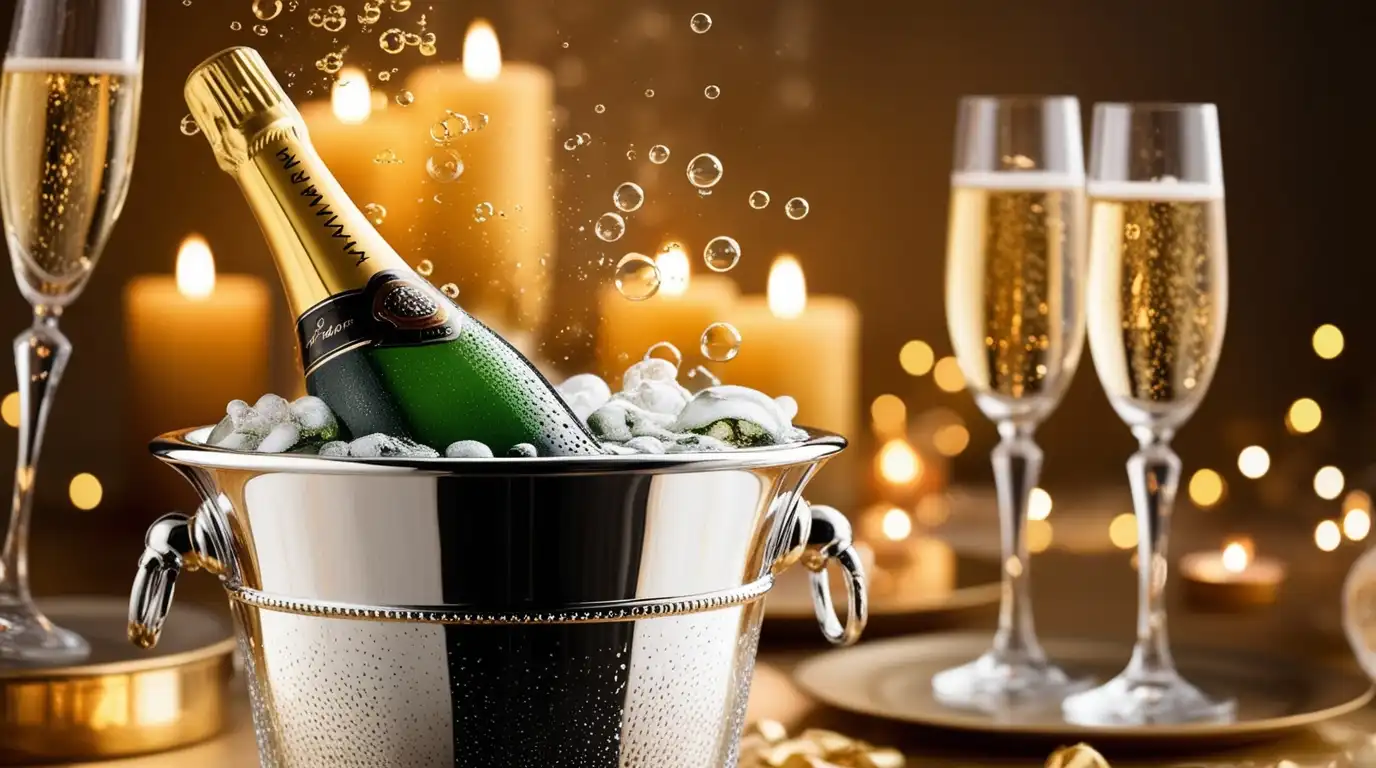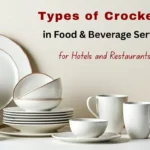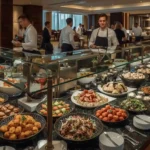What is Champagne? ????
Champagne is a French sparkling wine that originates from the Champagne region in northeastern France. The term “Champagne“ is legally protected and can only be used for sparkling wines produced in this specific region under strict Appellation d’Origine Contrôlée (AOC) regulations.
What Makes Champagne Unique?
Several factors make Champagne distinct from other sparkling wines:
✔️ Unique Terroir – The Champagne region has chalk and limestone-rich soil, which enhances the grapes’ acidity, contributing to Champagne’s signature crispness and effervescence.
✔️ Cool Climate – The region’s cooler temperatures slow down grape ripening, preserving freshness and producing a wine with naturally lower alcohol content.
✔️ Strict Production Rules – Champagne is made following the Méthode Champenoise (Traditional Method), which involves a secondary fermentation inside the bottle, creating its fine bubbles.
Grapes Used in Champagne Production ????
Three primary grape varieties are used to craft Champagne:
- Pinot Noir – A black grape that adds body, depth, and red fruit flavors (e.g., cherry, raspberry).
- Pinot Meunier – Another black grape, known for its fruity, round, and aromatic characteristics.
- Chardonnay – A white grape that contributes elegance, finesse, and citrusy freshness to the wine.
???? Did you know? Although Champagne is made from predominantly black grapes, the final product is a clear, sparkling white wine due to the way it is pressed without skin contact.
Why is Champagne So Expensive? ????
Champagne is considered a luxury wine due to several factors:
- ⏳ Time-Intensive Process – It takes 3 to 7 years to produce a single bottle of Champagne.
- ???? Labor-Intensive Method – The Méthode Champenoise requires meticulous craftsmanship, from hand-picking grapes to aging on lees.
- ???? Limited Production – The Champagne region has strict vineyard limits, keeping supply controlled while demand remains high.
The Origins and History of Champagne
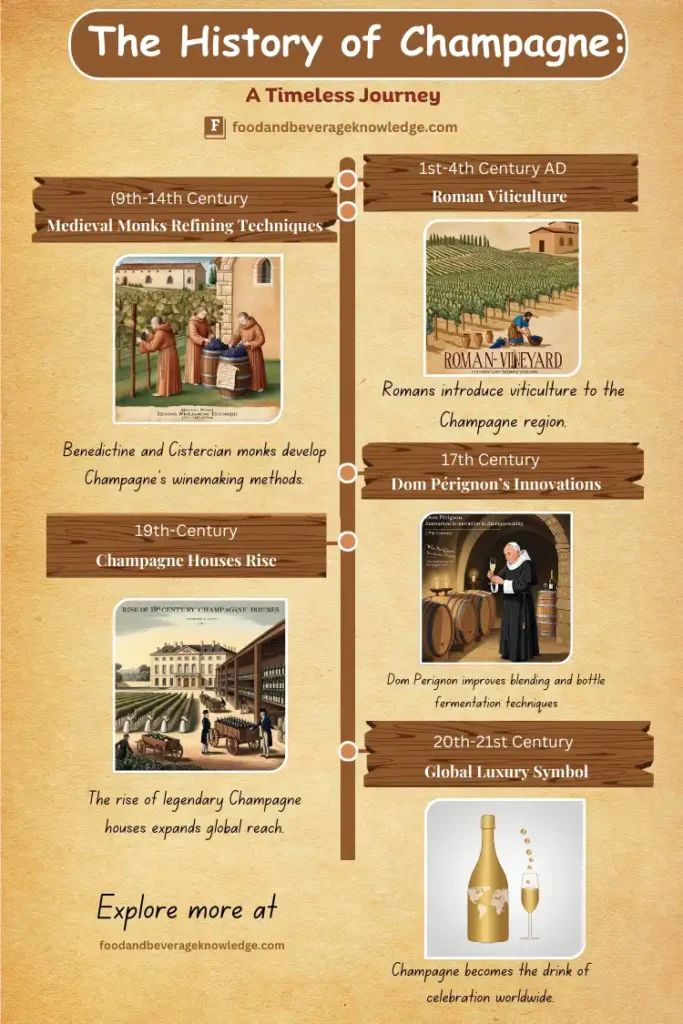
The Early History of Sparkling Wine
The effervescent magic of Champagne was discovered by accident. Early winemakers in the Champagne region struggled with unintentional secondary fermentation, causing bottles to explode due to trapped carbon dioxide. What was once considered a flaw eventually became Champagne’s defining trait.
???? Key developments:
- Cold Climate Effect: Winter halted fermentation, only for it to restart in spring, trapping bubbles.
- Monastic Refinement: Monks played a key role in improving winemaking techniques.
- Rising Popularity: The unique fizz intrigued winemakers and consumers alike.
Champagne’s Geographical Significance
The Champagne region’s unique terroir is the secret behind its exceptional quality. The cold climate preserves acidity, essential for freshness, while the chalky soil provides excellent drainage and a distinct minerality. The combination of Chardonnay, Pinot Noir, and Pinot Meunier grapes creates the perfect balance of elegance, body, and fruitiness.
The Role of the Romans and the Middle Ages in Viticulture
Wine production in Champagne dates back to Roman times when vineyards were planted to supply local settlements. By the Middle Ages, the Church had taken control of winemaking, with monks carefully documenting techniques that would influence Champagne’s evolution.
The region’s wines gained prestige through religious ceremonies and royal events, reinforcing their association with celebration and status. From Roman trade routes to medieval monasteries, Champagne’s foundations were built on centuries of dedication.
Innovations in Winemaking and Bottle Fermentation
The 17th century saw crucial advancements in Champagne production:
- English glassmakers developed stronger bottles, preventing explosions.
- Cork stoppers replaced wooden pegs, preserving bubbles.
- The Méthode Champenoise was refined, ensuring controlled secondary fermentation in the bottle.
How Champagne Became the Drink of Kings
By the 18th century, Champagne had become the ultimate symbol of luxury and power. French kings, particularly Louis XIV, celebrated their coronations with this sparkling delight, elevating its status among European aristocracy.
Champagne’s Role in European Courts and Aristocracy
Champagne was more than just a drink; it was an experience, a statement of prestige. European nobility, from Russia to England, embraced it as a status symbol. Its delicate bubbles and refined taste made it the preferred drink for royal feasts, diplomatic gatherings, and extravagant banquets.
“A single glass of Champagne imparts a feeling of joy.” – Napoleon Bonaparte
Expansion Into the Global Market
As demand grew, Champagne houses capitalized on their elite reputation. By the 19th century, they were exporting bottles worldwide, securing their place as the celebratory drink of choice. The British, in particular, developed a strong preference for drier styles, influencing the production of Brut Champagne.
???? Want to dive deeper into the history of Champagne? Learn more about its origins and evolution on Wikipedia. ????✨
The Science and Art of Champagne Making
The Unique Soil and Climate of Champagne
The Champagne region’s cool climate and unique soil composition are key factors in producing world-class sparkling wine. The cool temperatures help preserve the wine’s natural acidity, essential for freshness and aging potential.
The Role of Soil in Grape Cultivation
Champagne’s terroir is defined by its mineral-rich soil, which influences the grapes’ flavor and structure. The three main soil types are:
- Limestone – Provides excellent drainage and retains warmth.
- Chalk – Helps vines access water during dry periods, ensuring balanced growth.
- Marl – Adds richness and depth to the wine’s body.
“The secret to Champagne’s elegance lies beneath the vines.”
The Five Main Regions of Champagne
Each sub-region contributes to Champagne’s complexity:
- Montagne de Reims – Produces powerful and structured Pinot Noir.
- Vallée de la Marne – Best known for its fruity and expressive Pinot Meunier.
- Côte des Blancs – The heart of Chardonnay, creating elegant and mineral-driven wines.
- Côte de Sézanne – Produces softer, fruitier Chardonnay with a rounder profile.
- Aube (Côte des Bar) – Warmer climate, ideal for ripening Pinot Noir, resulting in richer wines.
Grape Varieties and Their Characteristics
Three primary grapes define Champagne’s signature style:
- Chardonnay (Elegance and finesse) – Adds freshness, citrus, and floral notes; ages well.
- Pinot Noir (Structure and complexity) – Provides body, red fruit flavors, and depth.
- Pinot Meunier (Fruitiness and approachability) – Enhances youthful, aromatic styles.
Each grape plays a unique role, with Chardonnay excelling in Blanc de Blancs, Pinot Noir adding power, and Pinot Meunier ensuring roundness in non-vintage blends.
“A perfect Champagne is a symphony of these three grapes.”
The Méthode Champenoise (Traditional Method)
Champagne is made using the Méthode Champenoise, a multi-step process that creates its signature tiny, persistent bubbles.
Steps of the Traditional Method:
- Primary Fermentation & Blending (Assemblage)
- Individual grape varieties are fermented into still wines.
- Wines from different vineyards and vintages are blended to achieve a consistent house style.
- Secondary Fermentation & Bottle Aging
- A mix of yeast and sugar (liqueur de tirage) is added.
- Bottles are sealed, triggering a second fermentation inside the bottle, producing natural carbonation (CO₂).
- The wine ages on the lees (dead yeast cells), developing rich flavors and creamy texture.
- Riddling (Remuage)
- Bottles are gradually rotated and tilted downward to collect sediment in the neck.
- Disgorgement & Dosage
- The sediment is frozen and removed (disgorgement).
- A small amount of sugar and wine (dosage) is added to balance the final taste.
“Without the traditional method, Champagne wouldn’t have its iconic sparkle.”
Also Read: How Beer is Made: A Detailed Step-by-Step Guide
Champagne Styles and Classifications
Vintage vs. Non-Vintage Champagne
- Non-Vintage (NV) – A blend of multiple years, ensuring house consistency.
- Vintage – Made from grapes of a single exceptional year, offering greater depth and aging potential.
Types of Champagne Based on Grapes
- Blanc de Blancs – 100% Chardonnay, light and elegant.
- Blanc de Noirs – Made from Pinot Noir and/or Pinot Meunier, richer and more full-bodied.
- Rosé Champagne – Delicate pink hue, created by either blending red and white wines or using skin-contact maceration.
Sweetness Levels of Champagne
Champagnes are classified by residual sugar content (grams per liter):
- Brut Nature (Zero Dosage) – 0-3g/L (bone dry).
- Extra Brut – 0-6g/L (very dry).
- Brut – <12g/L (balanced and dry, the most common style).
- Extra Dry – 12-17g/L (slightly off-dry).
- Demi-Sec – 32-50g/L (noticeably sweet).
- Doux – 50g+ (lusciously sweet, ideal for desserts).
“There is a Champagne for every palate, from crisp Brut to indulgent Demi-Sec.”
Champagne Culture and Enjoyment
How to Store and Serve Champagne
Proper Storage Conditions
To maintain Champagne’s freshness and effervescence, store it under ideal conditions:
- Temperature: 10-12°C (50-54°F) – Avoid extreme fluctuations.
- Humidity: Around 70% to keep corks from drying out.
- Light: Keep bottles away from direct sunlight and artificial light, as UV rays can degrade flavors.
- Position: Store bottles horizontally to keep the cork moist and airtight.
“Champagne should age like a secret, kept cool and in the dark.”
The Right Way to Open a Champagne Bottle
- Chill the bottle to around 6-8°C (42-46°F) for perfect serving.
- Hold the bottle at a 45° angle and remove the foil and wire cage (muselet).
- Grip the cork firmly and twist the bottle (not the cork) slowly to release the pressure with a gentle “sigh” rather than a loud pop.
Choosing the Best Glassware for Tasting
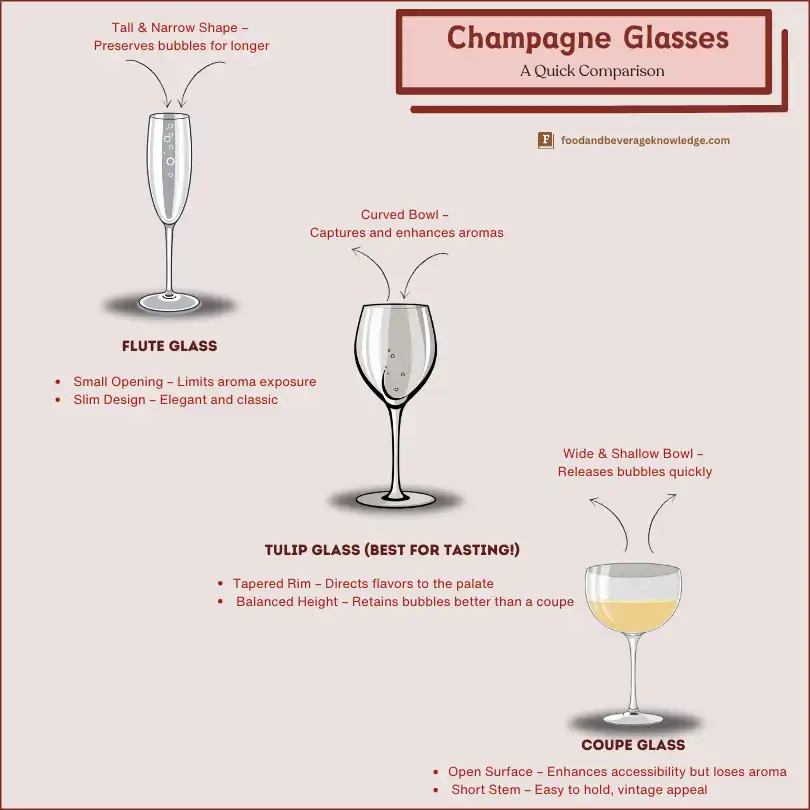
- Flute – Ideal for preserving bubbles and showcasing lively effervescence.
- Tulip glass – A better alternative, allowing aromas to develop while keeping the bubbles intact.
- Coupe – A vintage choice, but not recommended as it dissipates bubbles quickly.
“A flute captures the sparkle, but a tulip reveals the soul.”
Want to learn about glassware? Read: Different types of glassware used in food and beverage service
The Art of Champagne Tasting
A true Champagne experience engages sight, smell, and taste.
Three Steps to Tasting Champagne
- Visual – Observe the color, clarity, and size of bubbles (finer bubbles indicate quality).
- Aromatic – Swirl lightly and inhale aromas like citrus, toast, nuts, floral notes, or brioche.
- Taste – Identify the balance of acidity, sweetness, minerality, and body.
Key Champagne Tasting Notes
- Fresh & Citrus – Lemon, green apple, grapefruit.
- Floral & Herbal – Honeysuckle, white flowers, chamomile.
- Nutty & Toasty – Brioche, almond, hazelnut, vanilla.
- Fruity & Rich – Pear, peach, raspberry (in Rosé Champagnes).
“Each sip of Champagne is a celebration of time, terroir, and tradition.”
How Professionals Evaluate Champagne
Sommeliers and wine critics assess Champagne based on:
- Balance – Harmony between acidity, sweetness, and body.
- Mousse – The texture and persistence of bubbles.
- Finish – The length and complexity of flavors after swallowing.
Champagne and Food Pairings
Champagne’s versatility makes it perfect for a wide range of food pairings.
Classic Champagne and Food Pairings
- Brut Champagne + Oysters – The minerality enhances the ocean’s salinity.
- Blanc de Blancs + Sushi – Crisp acidity complements delicate fish flavors.
- Rosé Champagne + Duck or Lamb – Red fruit notes pair beautifully with savory meats.
Unexpected Pairings That Work
- Extra Brut + Fried Chicken – The crisp acidity cuts through the richness.
- Demi-Sec + Spicy Asian Cuisine – A hint of sweetness balances the heat.
- Vintage Champagne + Truffle Dishes – A luxurious match of complexity and umami.
Pairing Champagne with Cheese, Seafood, and Desserts
- Cheese: Brie, Parmesan, or Blue Cheese (each interacts differently with Champagne styles).
- Seafood: Lobster, scallops, caviar (enhanced by Brut or Blanc de Blancs).
- Desserts: Fruit tarts, macarons, or crème brûlée (best with Demi-Sec or Doux).
“Champagne pairs well with everything… and nothing at all.” – Madame Bollinger
We have a complete guide on: 19 Popular Wine and Cheese Pairings: Matching Reds, Whites, and More
Champagne Cocktails and Mixology
Classic Champagne Cocktails
- Mimosa – Champagne + Orange juice (Brunch favourite).
- Kir Royale – Champagne + Crème de Cassis (Blackcurrant liqueur).
- French 75 – Champagne + Gin + Lemon juice + Sugar (Elegant and refreshing).
Modern Champagne-Based Drinks
- Black Velvet – Equal parts Champagne and Stout (Unique contrast of crisp and creamy).
- Champagne Mojito – Champagne + Mint + Rum + Lime (A bubbly twist on a classic).
- Elderflower Spritz – Champagne + Elderflower liqueur + Club soda (Floral and refreshing).
Dos and Don’ts of Mixing Champagne
✔ Do use chilled Champagne to maintain freshness.
✔ Do experiment with herbs, liqueurs, and fresh fruit for natural flavors.
❌ Don’t use expensive vintage Champagne in cocktails—save those for pure tasting.
❌ Don’t mix Champagne with heavy syrups that overpower its delicate notes.
“A well-crafted Champagne cocktail is elegance in a glass.”
Conclusion: The Timeless Allure of Champagne
Champagne is more than just a sparkling wine—it is a symbol of celebration, elegance, and craftsmanship. From its ancient roots in Roman viticulture to its refinement in the cellars of Champagne houses, every bottle carries centuries of tradition and innovation.
Why Champagne Remains Unmatched
✔ A Reflection of Terroir – The unique chalky soils and cool climate of the Champagne region create an inimitable taste.
✔ Mastery of Méthode Champenoise – The meticulous process of secondary fermentation, aging, and riddling ensures finesse and complexity.
✔ Versatile and Timeless – Whether paired with fine cuisine, enjoyed on its own, or mixed into cocktails, Champagne enhances every occasion.
The Future of Champagne
As consumer tastes evolve and sustainability becomes a priority, Champagne producers are adapting with organic viticulture, lower-dosage styles, and innovative winemaking techniques. Yet, at its core, Champagne remains a beverage of joy, luxury, and artistry.
“Too much of anything is bad, but too much Champagne is just right.” – F. Scott Fitzgerald
So, whether you’re toasting a milestone, savoring a quiet moment, or exploring new pairings, Champagne is always the perfect companion. Here’s to the magic in every bubble—cheers! ????
Subscribe and join our community of hospitality professionals & students — get insights, tips, and the latest updates delivered straight to your inbox!

